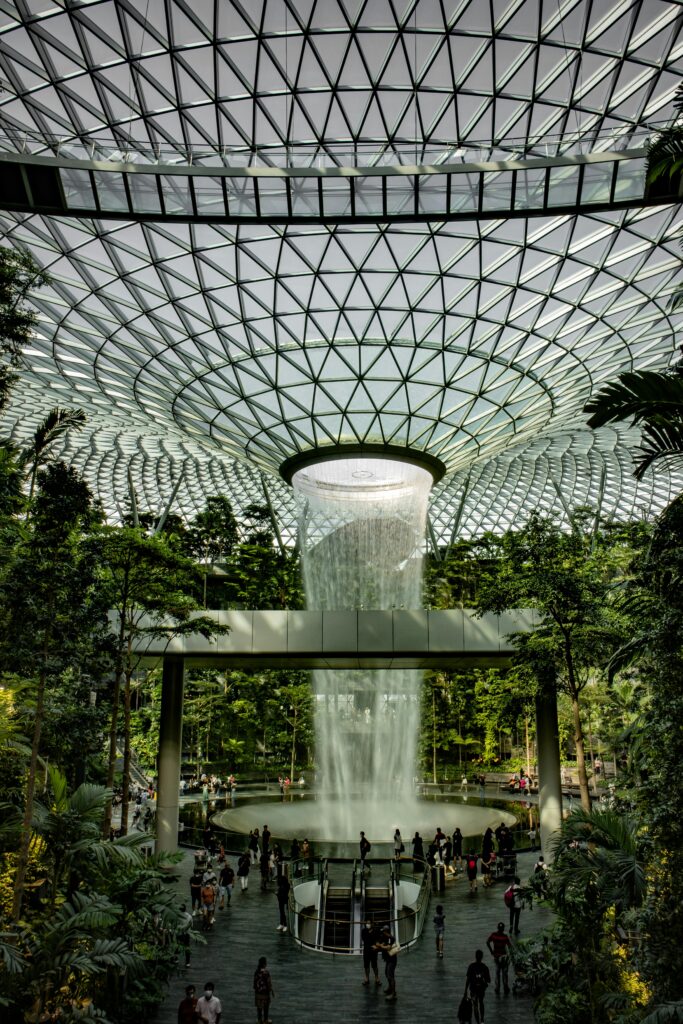As urban centers worldwide confront the escalating impacts of climate change and overpopulation, the emergence of regenerative cities signals a forward-thinking paradigm shift. The WIRED Japan article, Here’s What the Regenerative Cities of Tomorrow Could Look Like, explores transformative urban projects that redefine sustainability by fostering a symbiotic relationship between urban spaces and their ecosystems.
The article delves into a series of innovative urban examples demonstrating how cities are pivoting toward sustainability through unique local approaches and cutting-edge design. Highlighted projects range from Singapore’s eco-luxury Pan Pacific Orchard hotel, boasting landscaped terraces equivalent to 200% of its lot size, to Tokyo’s Regenerative Community Tokyo, a hub where corporate collaboration tackles urban challenges. These cases exemplify the shift from mere ‘green’ city strategies to regenerative solutions that replenish and integrate local environments.
Key Insights on Regenerative Urban Design
The piece begins with Singapore’s architectural gem, the Pan Pacific Orchard, crafted by WOHA, a firm known for its commitment to blending high-density urbanism with environmental stewardship. The hotel received Singapore’s top environmental certification, Green Mark Platinum, demonstrating the effectiveness of active and passive design strategies to reduce energy and water consumption. This project is a testament to WOHA’s innovative WOHA Rating System, which evaluates environmental and social impacts through comprehensive metrics.
New York’s The Nursery at Public Records offers another compelling example. This multifunctional greenhouse and music venue blurs the lines between urban activity and nature, promoting community interaction while utilizing recycled materials. Meanwhile, Brooklyn Grange, with its rooftop farms and equitable food distribution, underscores the multifunctional use of urban space to address food insecurity, stormwater management, and heat-island effects.
Europe’s leadership in sustainable innovation is highlighted by Amsterdam’s Marineterrein and its adoption of doughnut economics to align urban growth within planetary limits. The repurposed shipyard serves as an incubator for circular economy practices, showcasing projects that include everything from recycling initiatives to urban agriculture.
Broader Implications for Global Urban Planning
These examples indicate that a tailored approach is crucial in fostering truly regenerative cities. Kongjian Yu’s sponge city concept in China is lauded as a responsive strategy to climate variability, utilizing green infrastructure to manage water and mitigate floods. The work of Francis Kéré in Kampala exemplifies how integrating indigenous materials and traditional knowledge with contemporary design can create sustainable, resilient urban spaces that resonate with local culture.
However, a key challenge remains: scaling these initiatives to larger, more complex urban contexts. The article underscores the necessity for innovative financing solutions, such as blended finance, to bridge the funding gap for expansive regenerative projects. Collaborations across public, private, and non-governmental sectors are vital to transforming visionary concepts into tangible realities.
Reflections on Regenerative Cities
The review of WIRED’s article underscores the profound potential and urgent need for regenerative cities. These urban environments extend beyond reducing negative impacts; they actively contribute to environmental restoration and resilience. Such a shift requires a comprehensive understanding of local ecology, culture, and economy to create adaptive and inclusive urban solutions.
For urban leaders, policymakers, and planners, the path forward involves embracing diverse strategies and fostering collaboration that prioritizes regenerative principles. The future of cities will depend on how well they balance growth with environmental and social sustainability—integrating technology, local knowledge, and innovative financing to turn regenerative concepts into scalable realities.
For further reading and insights, visit the full article on WIRED.


